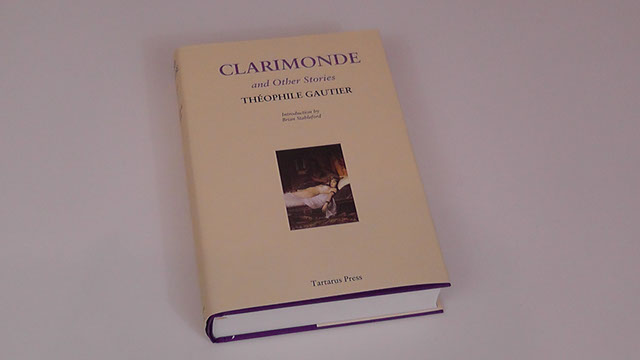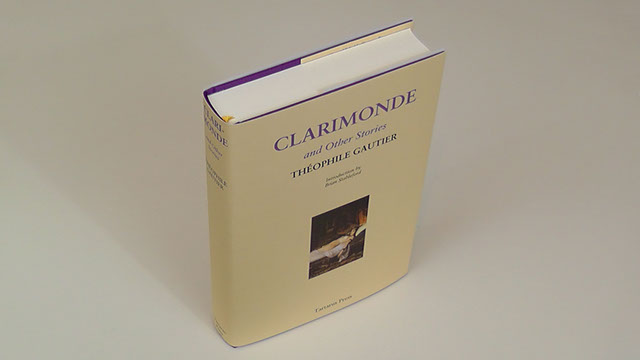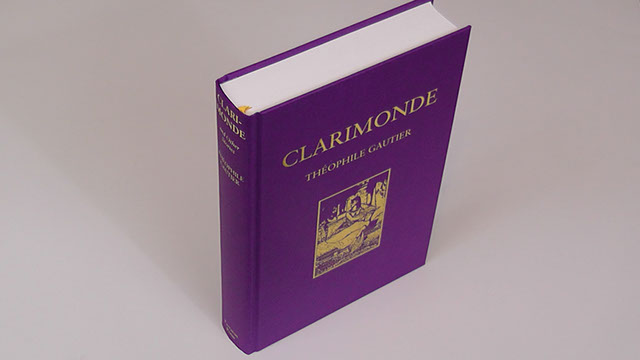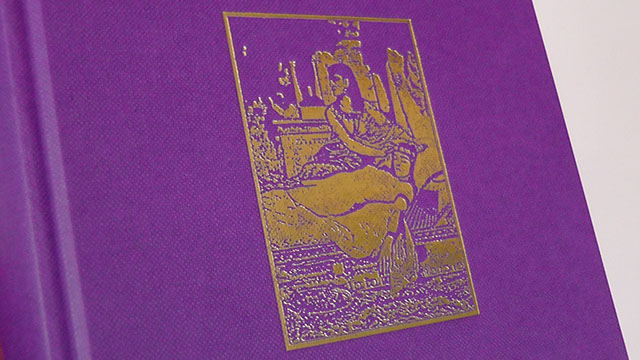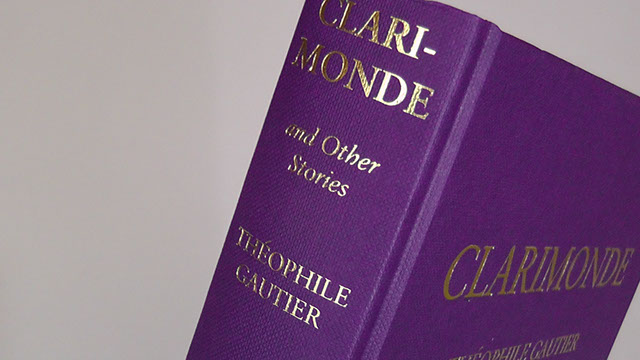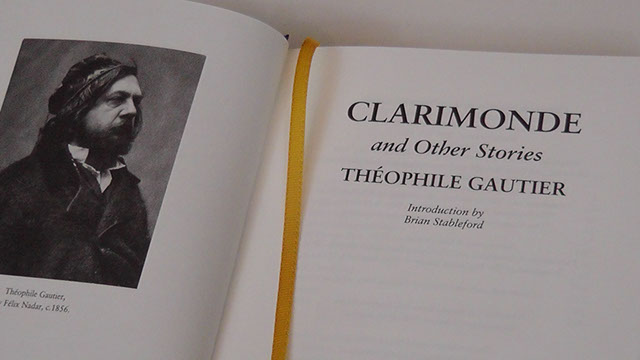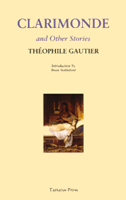Clarimonde and Other Stories is a sewn hardback of 366+xiii pages, printed lithographically, with head and tailbands, and d/w.
Limited to 300 copies.
ISBN 978-1-905784-38-7
Sorry - out of print
Clarimonde
and Other Stories
by
Théophile Gautier
Introduction by Brian Stableford
If you appreciate supernatural French Decadence, then you need look no further than Clarimonde and Other Stories by Théophile Gautier. A pioneer of the genre, Gautier (1811-1872) garnered his initial enthusiasm for supernatural literature from the stories of E.TA. Hoffman, adding an erotic effusiveness all his own. Gautier’s trail-blazing manifesto for Romanticism was taken up by numerous other writers, most notably by Charles Baudelaire, who in 1857 dedicated Les Fleurs du mal to him.
The twelve stories in this volume represent the best of Gautier’s fantastic tales and deal with a wide range of supernatural phenomena, including identity exchange (in ‘Avatar’), vampirism, time travel, the evil eye, and the decadence of ancient Egypt (in ‘One of Cleopatra’s Nights’). Most of the translations are by the Irish-American writer Lafcadio Hearn, and retain the ardent extravagance of Gautier’s original French style.
As Brian Stableford says in his new Introduction, ‘Gautier remains ... a key writer in the evolution of fantastic fiction from its Gothic roots to its psychological sophistication, whose importance in the middle part of the nineteenth century ... deserves to be ranked second [only to Poe].’
Clarimonde and Other Stories contains: ‘Introduction’ by Brian Stableford, ‘Onuphrius’, ‘Two Actors for One Part’, ‘Omphale’, ‘Clarimonde’, ‘One of Cleopatra’s Nights’, ‘The Opium Pipe’, ‘The Duplicated Knight’, ‘The Mummy’s Foot’, ‘King Candaules’, ‘Arria Marcella’, ‘Jettatura’, ‘Avatar’, and various addenda.
Review
'Read this for the prose style alone, which, for anyone who has read his one anthologised story ‘Loving Lady Death’ (‘La Morte Amoureuse’)—re-translated as the title tale here—will already have experienced his stunning, sensual evocation of place and time. This continues in the other eleven tales.' The Pan Review
Copyright Tartarus Press 2025
